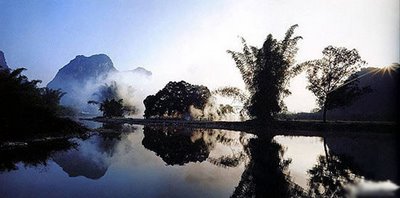Rise of the Red Dragon
Latest News | Travel | Developments | Food | Culture | Entertainment
Wednesday, April 09, 2008
Monday, March 03, 2008
China may scrap one-child policy
BEIJING (Reuters) - China, worried about an ageing population, is studying scrapping its controversial one-child policy but will not do away with family-planning policies altogether, a senior official said on Thursday.
With the world's biggest population straining scarce land, water and energy resources, China has enforced rules to restrict family size since the 1970s. Rules vary but usually limit families to one child, or two in the countryside.
"We want incrementally to have this change," Vice Minister of the National Population and Family Planning Commission Zhao Baige told reporters in Beijing. Full Story...
Tuesday, January 22, 2008
Sunday, January 20, 2008
Wednesday, January 16, 2008
87.5% of toys meet quality requirements on China's domestic market
BEIJING, Jan. 16 (Xinhua) -- Of toys on China's domestic market, 87.5 percent meet quality requirements, according to the quality monitoring result released by the State Administration for Commerce and Industry (SACI) on Wednesday.
The quality monitoring, conducted by SACI and involving local administrative bureaus of commerce and industry, covered 120 groups of toys sold by 32 wholesalers and retailers in Chongqing municipality and Jiangxi, Liaoning and Anhui provinces.
China's toy-making industry had experienced an uneasy 2007 amid some toy recall dramas in the U.S. and some European countries, which were major importers of Chinese toys.
The Chinese government responded to this by launching a four-month-long nationwide product quality campaign and offered intensive training courses to domestic toy manufacturers to brush up on their knowledge of international product standards and safety awareness.
This time, testing had been carried out on all the eleven indicators stipulated in national regulation on toys safety, including normal use, reasonable misuse, materials, small parts, edge, pointed ends, intervening space between the moving parts, drives, upper limit of movable elements (antimony, barium, cadmium, chromium, lead, mercury, selenium) and the toys introduction.
In the testing, 15 groups of toys failed to meet requirements, among which were squirt guns under the brand of "HTTOYS" and plastic toys under the brand of "Hong Jia".
In some cases, small parts were easily pulled off by children, which could hurt them if they are eaten. And in other cases, the introductions were not clear enough, which might mislead the users.
Local administrative bureaux had banned sale of those sub-standard toys and violators would receive punishments according to law, said SACI.
China had thoroughly inspected all 3,000-plus toy makers for export during a product quality campaign that began last August. More than 600 Chinese toy makers have had their export licenses revoked to ensure product quality, the State Administration for Quality Supervision and Inspection and Quarantine (AQSIQ) announced on Monday.
XINGHUANET
Tags: China | Beijing | News
Monday, December 17, 2007
China's first home-made regional jet to roll off production line this week
BEIJING, Dec. 17 (Xinhua) -- China's first home-made regional jet is expected to roll off the production line on Friday, the Commission of Science Technology and Industry for National Defense said here on Monday.
The ARJ21-700 commercial passenger jet was designed and produced by the China Aviation Industry Corporation I (AVIC I). It seats between 78 and 90 people.
The jet was expected to make its maiden flight in March and be delivered to the first customers in the third quarter of 2009. AVIC I was scheduled to start mass production of the jet in 2009.
The ARJ21 program, launched in 2000, will help AVIC I grab a share of the world's regional jet market, currently dominated by Canada's Bombardier Inc. and Brazil's Embraer SA.
Tags: China | Beijing | Photos
Wednesday, July 12, 2006
China's One-Child Problem
BEIJING — When a self-taught lawyer and activist named Chen Guangcheng went public with reports of forced abortions and other abuses by family-planning officials in China's Shandong province, he became a local hero.
He also became a state threat.
Roughly a year later, despite international pressure, widespread support from lawyers and an acknowledgment from national officials that many of his disclosures were accurate, the 35-year-old Chen remains in custody.
His case stands as a warning that being right is not a sure defense in a system wary of any challenge to its authority.
On Monday, the blind activist's wife was interrogated and one of his supporters beaten, the latest in a series of moves apparently designed to intimidate and punish Chen for exposing forced abortions and sterilization under China's one-child campaign, one of his lawyers said.
Chen, villagers and his lawyers say tens of thousands of women and men were subjected to forced abortions and obligatory sterilization in and around Linyi, a municipal area with about 10 million people, in order to meet stringent quotas under the one-child campaign.
National family-planning officials insist most population programs are not coercive and say the one-child effort has helped elevate millions from poverty by ensuring more resources are available for the nation's vast population, currently more than 1.3 billion.
Despite its name, China's one-child system is a patchwork of rules under the umbrella of a national policy. Minority communities receive automatic exemptions. Urban parents who both come from one-child families can have a second offspring, as can farmers whose first child is a girl. Some pay fines to have more children.
(Article Continued)
Tags: China | Beijing | Culture
China's economy may expand up to 10.4%
Two government think-tanks yesterday predicted China's economy would expand by 10.2 to 10.4 per cent in 2006, advising further interest rate hikes to prevent overheating.
Gross domestic product (GDP) may grow at 10.5 per cent in the first half of the year and 10.4 per cent for the whole year, according to a report from the State Information Centre.
The consumer price index (CPI), the major inflation barometer in China, may grow by 1.3 per cent in the first half of the year and 1.5 per cent or more in 2006.
But CPI growth should be controlled under 2 per cent this year, despite signs of faster growth in the second half of the year, according to Wang Yuanhong, co-author of the report and a senior researcher with the centre, an influential government think-tank in Beijing.
The economy as a whole will continue to be robust investment and the trade surplus are both expanding rapidly and consumption is strong too, Wang said.
The State Information Centre predicted a 30.6 per cent urban fixed-assets investment growth for the first six months and 29 per cent for the whole year.
The trade surplus is expected to expand to US$133.6 billion in 2006.
These factors may push authorities to take more tightening measures to prevent the economy from overheating, said Wang.
A further interest rate hike in the second half of the year is therefore likely and the central bank may also ask for even higher reserve requirements for commercial banks, he said.
The rates for mid- and long-term loans, in particular, should be increased substantially.
A report by the Academy of Macroeconomic Research under the National Development and Reform Commission also suggested the central bank further raise both lending and deposit rates by 0.25 of a percentage point at an appropriate time to squeeze liquidity of commercial banks and rein in excessive investment growth.
It anticipated a 10.4 per cent GDP growth for the first two quarters and 10.2 per cent for the year. CPI growth was estimated at 1.5 per cent this year, according to the report.
Excessive growth of money supply and overcapacity of some industries have become two major threats to economic stability in both the long and short term.
The central government is faced with the challenge of curbing the investment enthusiasm of local governments, which has led to a rapid increase of new project launches in the first six months of this year, the start of the 11th Five-Year Plan (2006-10).
It should adopt certain measures to cool down the economy and ensure a sustained long-term development, the report said.
Wang Yuanhong, with the State Information Centre, also said the central government should further tighten controls on land supply, in line with the credit curb, to moderate the investment growth.
But instead of a drastic policy adjustment, the macro control measures should be conducted "within a mild range," he said.
The authorities are still waiting to see the effect of the tightening methods already adopted, as there are often lags between monetary policy action and its impact on the economy.
The central bank, cautious of excessive lending growth since late last year, ordered an 0.27 percentage point rise of the benchmark lending-rate on April 28 and a half percentage point rise for the reserve requirements for commercial banks starting from July 5.
China's M2, the broad measurement of money supply that includes cash, savings and corporate deposits, grew by 19.1 per cent by the end of May, 4.4 percentage points higher than the same period a year ago. Outstanding renminbi loans also expanded by 16 per cent by then, 3.6 percentage points higher than a year ago.
Apart from interest rate rises, more specialized central bank bills may be issued to designated commercial banks to freeze liquidity if necessary, said Wang.
Besides investment and lending, other major concerns for the macro economy include a rapid growth of foreign exchange reserves (resulting from the mounting trade surplus and robust external demand), surging asset prices in housing and production materials, high consumption of energy resources and low efficiency in the application of resources, the State Information Centre report said.
It suggested the central government closely monitor investment activities initiated by local government and control the scale of urban construction. Local preferential policies should also be checked.
Source: China Daily
Tags: China | Development | Economy
Friday, July 07, 2006
Photos: Beijing Airport Terminal 3 Update

The photo shows the construction site of the No. 3 terminal of Beijing Capital International Airport, which is set to begin trial operation in 2008. A driverless train will carry international passengers from T3A (domestic) to T3B (international) in the new No. 3 terminal by then. The rail linking the two areas is 2.5 km long and one ride takes four minutes.

The photo shows the construction site of the No. 3 terminal of Beijing Capital International Airport, which is set to begin trial operation in 2008. A driverless train will carry international passengers from T3A (domestic) to T3B (international) in the new No. 3 terminal by then. The rail linking the two areas is 2.5 km long and one ride takes four minutes.
Click Here for previous update with renderings
Tags: China | Beijing | Construction












